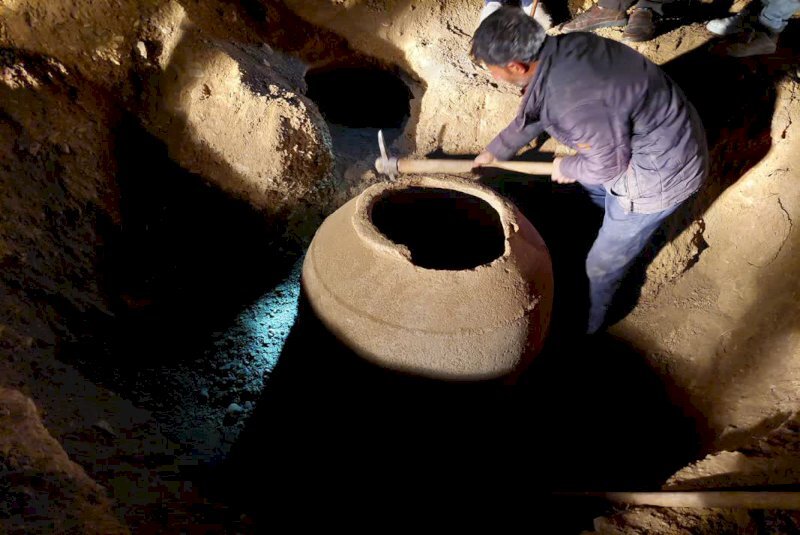Sassanid-era urns unearthed in northwest Iran

TEHRAN – Two centuries-old clay urns have recently been discovered in Kahriz village, West Azarbaijan province, northwestern Iran, a senior police official in charge of protecting cultural heritage has said.
The historical relics, which are estimated to date back to the Sassanid era (224–651), were unearthed accidentally during a road construction project, Behzad Hejabi explained on Wednesday.
The historical objects have been moved to the Urmia Archaeological Museum for further studies, the official added.
The Sassanid era is of very high importance in the history of Iran. Experts believe during the Sassanid era the art and architecture of the nation experienced a general renaissance. In that era, crafts such as metalwork and gem engraving grew highly sophisticated, as scholarship was encouraged by the state; many works from both the East and West were translated into Pahlavi, the official language of the Sassanians.
In 2018, UNESCO added an ensemble of Sassanian historical cities in southern Iran -- titled “Sassanid Archaeological Landscape of Fars Region”-- to its World Heritage list. The ensemble is comprised of eight archaeological sites situated in three geographical parts of Firuzabad, Bishapur, and Sarvestan. It reflects the optimized utilization of natural topography and bears witness to the influence of Achaemenid and Parthian cultural traditions and of Roman art, which later had a significant impact on the architecture and artistic styles of the Islamic era.
ABU/AM
Leave a Comment